Get ready to take your grilling game to the next level with these 5 must-know tips for perfect gas grill smoker barbecue. Whether you're a seasoned griller or just starting out, this guide will show you how to achieve mouthwatering, smoky flavors with your gas grill. So get your apron on and fire up that gas grill!
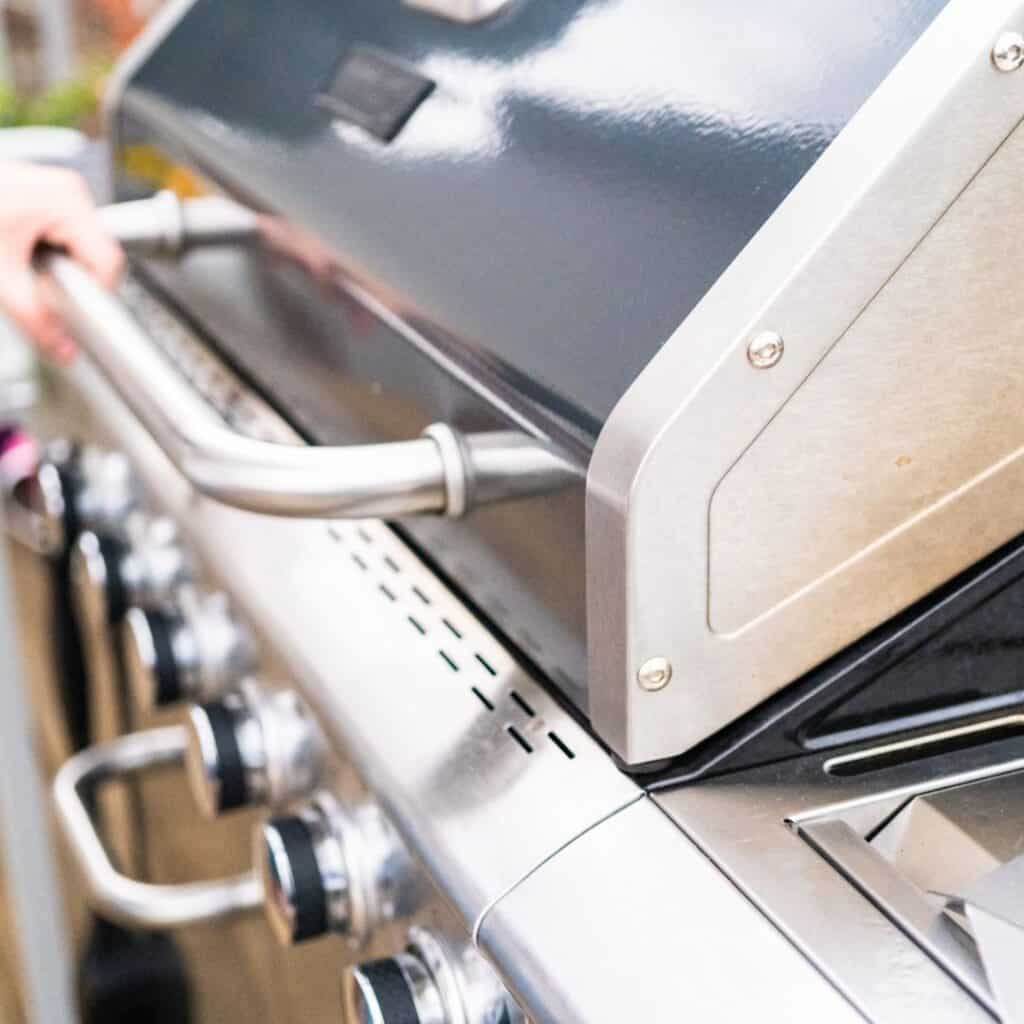
Benefits of using your gas grill smoker
Gas grill smoking offers a range of benefits. Not only does it give off a unique, smoky flavor to your meats when cooking, but it also allows for greater control over the cooking process. Unlike traditional grilling, smoking involves slow cooking at lower temperatures, resulting in tender and juicy meats. The low and slow method of smoking helps to break down the tough connective tissues in meat, resulting in melt-in-your-mouth textures. Additionally, smoking can infuse your meats with a variety of flavors, depending on the type of wood chips you choose.
To achieve the best results with gas grill smoking, it's important to choose the right wood chips that complement the flavors of your meats.
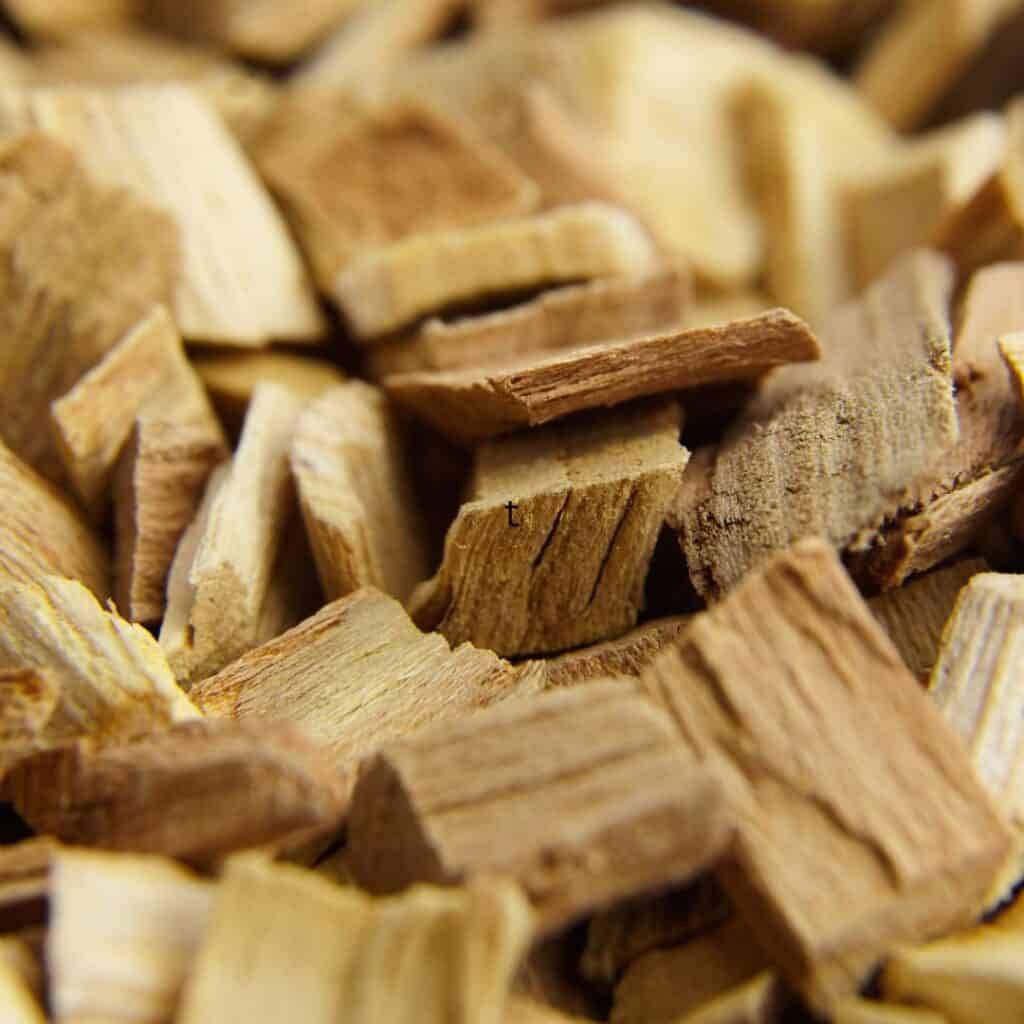
Step 1: Choosing the right wood chips for smoking
When it comes to gas grill smoking, the type of wood chips you use can make a significant difference in the flavor of your barbecue. Different woods impart different flavors for different meat types, so it's important to choose wisely based on the type of meat you're smoking and the flavor profile you're aiming for. Here are some popular wood chip options and the flavors they can bring to your barbecue:
Mesquite:
Mesquite wood chips are known for their strong and robust flavor. They pair well with beef, especially cuts like brisket and ribs. The intense smokiness of mesquite can add a bold and distinctive taste to your barbecue.
Hickory:
Hickory wood chips are a classic choice for smoking. They provide a strong, yet sweet flavor that complements a wide range of meats, including pork, chicken, and beef. Hickory is a versatile wood that can add depth and richness to your barbecue.
Apple:
Apple wood chips are known for their mild and slightly sweet flavor. They are a popular choice for smoking poultry, such as chicken and turkey, as well as pork. Apple wood chips can add a subtle fruity aroma to your barbecue, enhancing the natural flavors of the meat.
Cherry:
Cherry wood chips offer a slightly sweet and fruity flavor that pairs well with pork and poultry. They can add a beautiful reddish hue to your meats and provide a delicate smokiness that is not overpowering.
Oak:
Oak wood chips are known for their medium to strong flavor. They are a versatile option that can be used with a variety of meats, including beef, pork, and poultry. Oak provides a balanced smokiness that enhances the natural flavors of the meat without overpowering it.
When choosing wood chips for smoking, it's important to use hardwood chips that are free from chemicals or additives. Soak the wood chips in water for at least 30 minutes before using them to ensure they produce a steady and consistent smoke. Experiment with different wood chip flavors to find your favorite combinations.
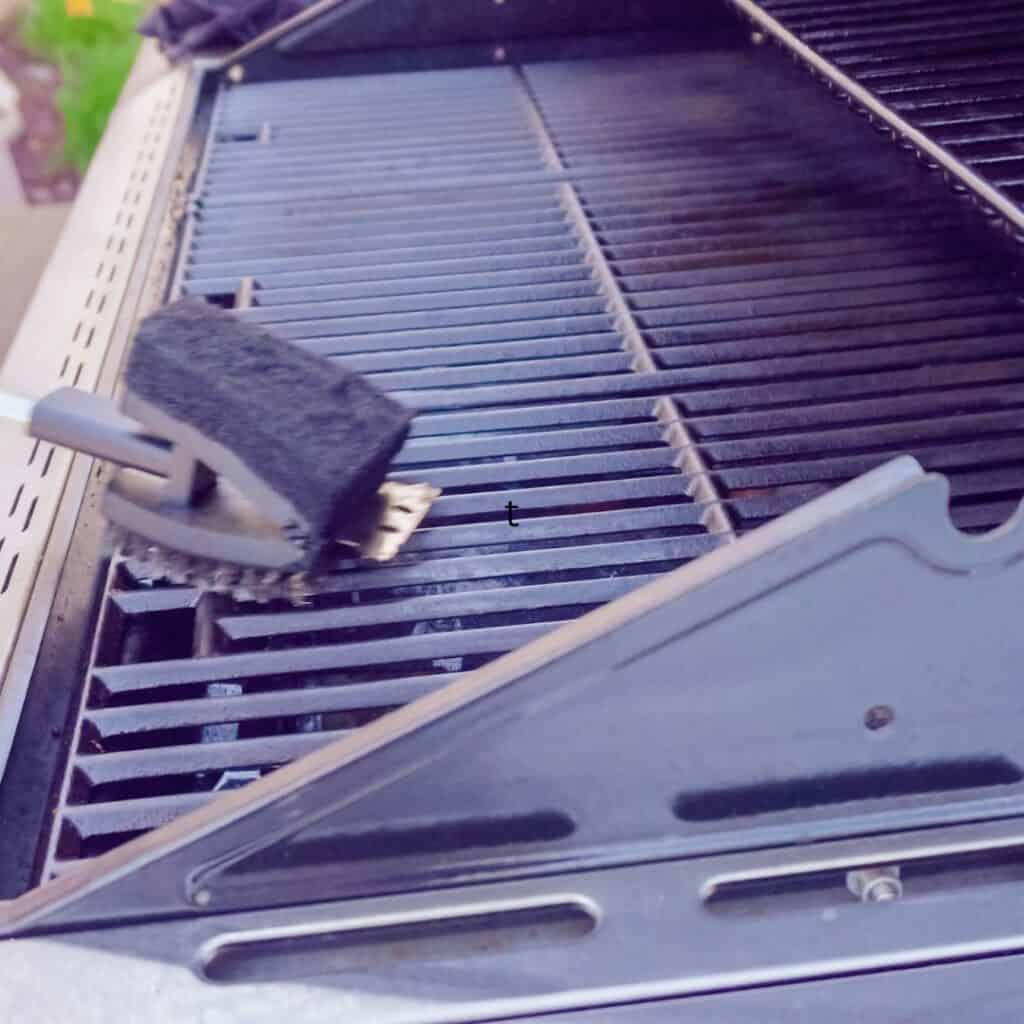
Step 2: Prepare the gas grill for smoking
Before you start smoking on your gas grill, it's important to properly prepare and set up your grill for the best results. Here's a step-by-step guide on how to prepare your gas grill for smoking:
Clean the grill:
Start by thoroughly cleaning your gas grill. Remove any leftover food residue and grease from the grates and the interior of the grill. This will help prevent any unwanted flavors and ensure even heat distribution.
Set up a two-zone fire:
To smoke on a gas grill, you'll need to create a two-zone fire. This means having one side of the grill set to low heat for indirect cooking and the other side set to higher heat for searing. If your gas grill has multiple burners, light only one or two burners and leave the others off. This will allow you to control the temperature more effectively.
Use a smoker box or foil packet:
To create smoke, you'll need to use a smoker box or a foil packet filled with soaked wood chips. Place the smoker box directly on the flavorizer bars or lava rocks of your gas grill. If using a foil packet, wrap the soaked wood chips in aluminum foil, poke a few holes in the foil, and place it directly on the burners. I actually just use a disposable metal tin bread pan. It works great and sits on the bars very easily.
Preheat the grill:
Close the lid of the grill and preheat it for about 10-15 minutes. This will allow the wood chips to start smoking and the grill to reach the desired temperature.
Adjust the temperature:
Once the grill is preheated, adjust the temperature to the desired level for smoking. The ideal smoking temperature is typically between 225°F and 275°F. Use the control knobs on your gas grill to achieve and maintain the desired temperature.
By following these steps, you'll be well on your way to achieving the perfect smoke on your gas grill and creating mouthwatering barbecue flavors.
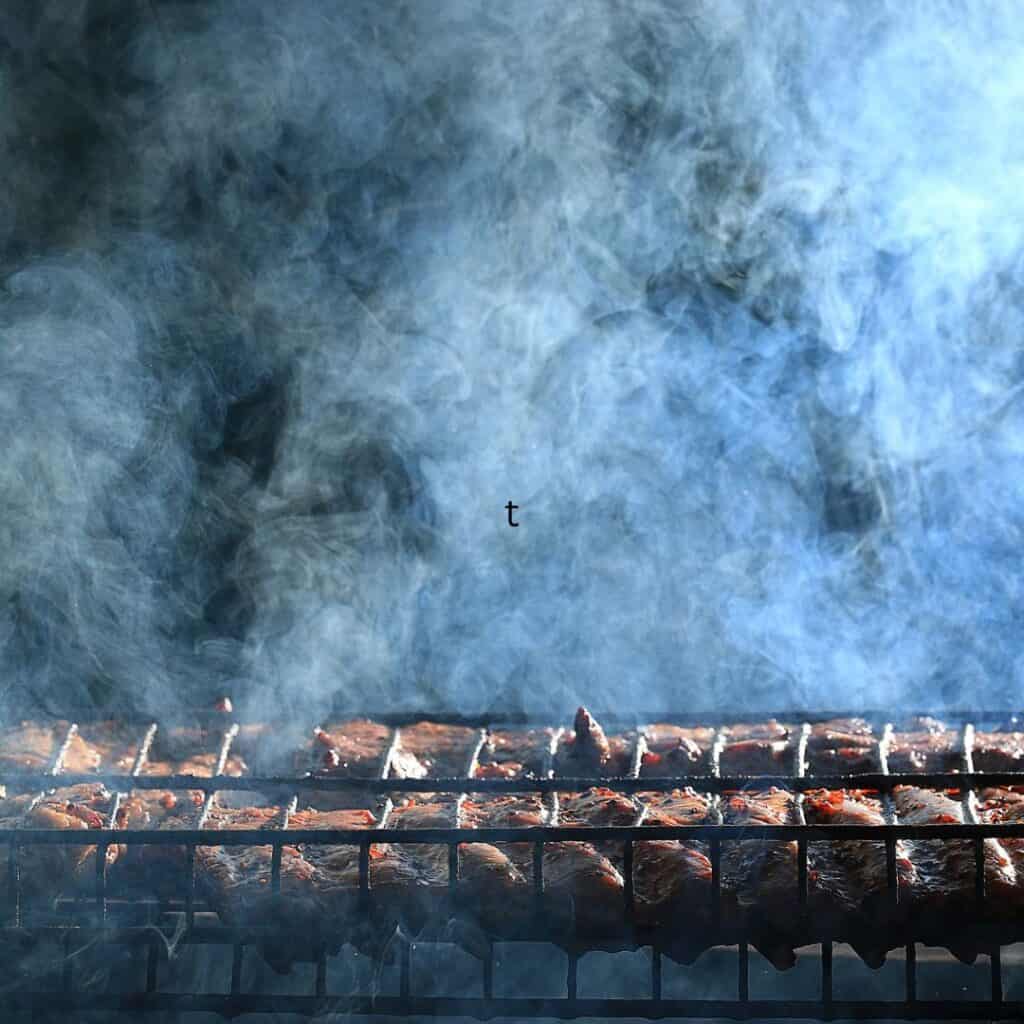
Step 3: Tips for Achieving the Perfect Barbecue Flavor
To achieve the perfect barbecue flavor with gas grill smoking, there are a few key tips to keep in mind. These tips will help you maximize the smoky flavors and ensure tender and delicious results. Here are some tips to help you achieve barbecue perfection:
Season your meats:
Before smoking, season your meats with a dry rub or marinade. This will enhance the flavors and create a delicious crust on the exterior of the meats. Allow the seasonings to penetrate the meat by refrigerating it for at least one hour or overnight.
Don't rush the process:
This is a tough one for me. Gas grill smoking is all about low and slow cooking. Avoid the temptation to rush the process by increasing the heat or opening the lid frequently. Maintaining a consistent temperature and allowing the smoke to work its magic will result in tender and flavorful meats.
Baste with a mop sauce:
During the smoking process, periodically baste your meats with a mop sauce to keep them moist and add extra flavor. A mop sauce is typically a thin, vinegar-based sauce that can help enhance the smoky flavors and prevent the meats from drying out. A lot of times we just use barbeque sauce as our mop sauce when grilling.
Let it rest:
Once your meats are cooked to perfection, allow them to rest for a few minutes before serving. This will help the juices redistribute and ensure moist and tender results.
By following these tips, you'll be well on your way to achieving the perfect barbecue flavor with gas grill smoking. Experiment with different seasonings, sauces, and wood chip flavors to create your own signature barbecue style.
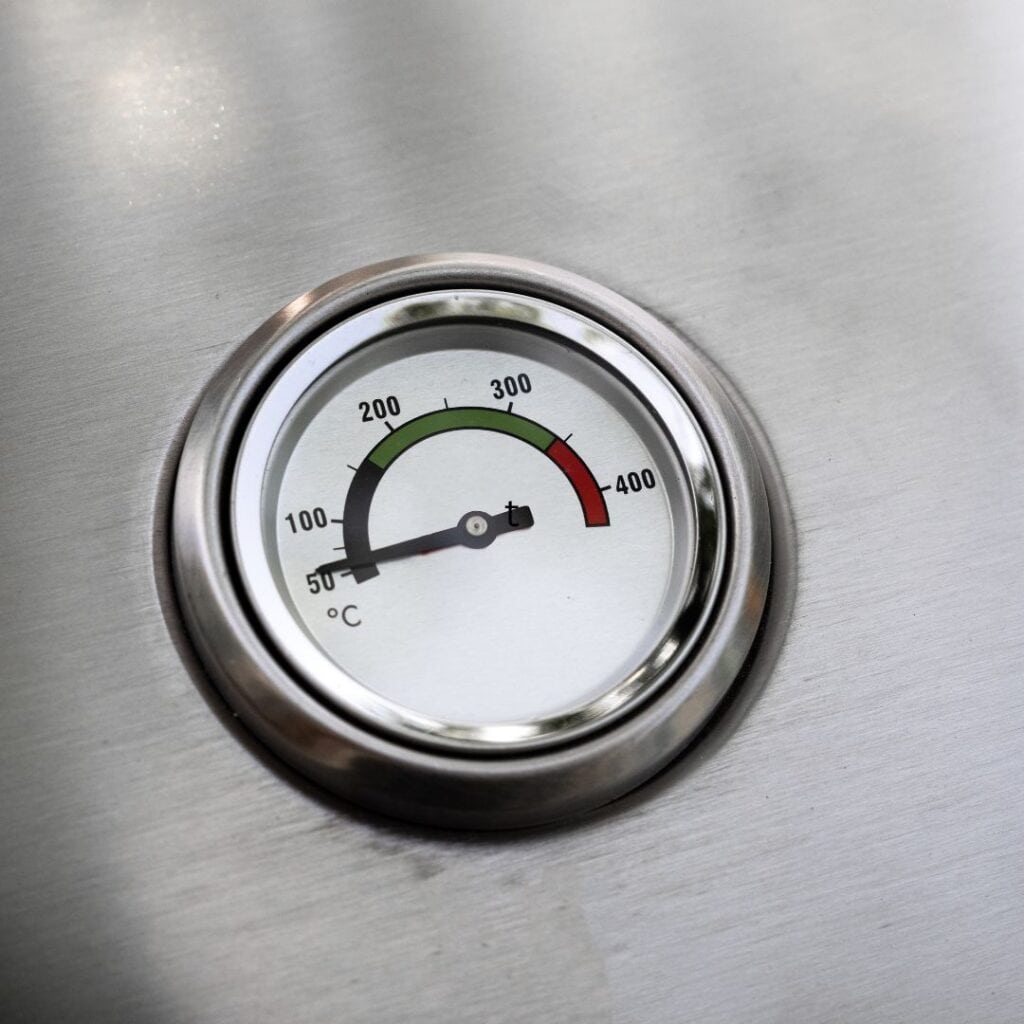
Step 4: Monitoring and Controlling the Temperature
Monitoring and controlling the temperature is crucial when it comes to gas grill smoking. Maintaining a consistent temperature throughout the smoking process will ensure even cooking and optimal smoke absorption. Here are some tips for monitoring and controlling the temperature on your gas grill:
Use a reliable thermometer:
Invest in a good quality thermometer to monitor the temperature of your grill and the internal temperature of your meats. This will help you ensure that you're cooking at the desired temperature and that your meats are cooked to perfection.
Avoid opening the lid too often:
Guilty! Every time you open the lid of your gas grill, you let out heat and smoke. Avoid opening the lid unnecessarily, as this can cause temperature fluctuations and impact the overall smoking process. Only open the lid when necessary, such as when checking the internal temperature of your meats.
Adjust the burner knobs:
Use the burner knobs on your gas grill to control the temperature. If the grill is too hot, reduce the heat by turning down the burner knobs. If the grill is not hot enough, increase the heat by turning up the burner knobs. Make small adjustments and allow the temperature to stabilize before making further changes.
Manage the airflow:
Proper airflow is crucial for maintaining the desired temperature and smoke production. Some gas grills have vents or dampers that can be adjusted to control the airflow. Open the vents for more heat and smoke, and close them for less heat and smoke. Experiment with the airflow to find the perfect balance for your smoking needs.
By monitoring and controlling the temperature on your gas grill, you'll be able to achieve consistent and delicious results every time you smoke.
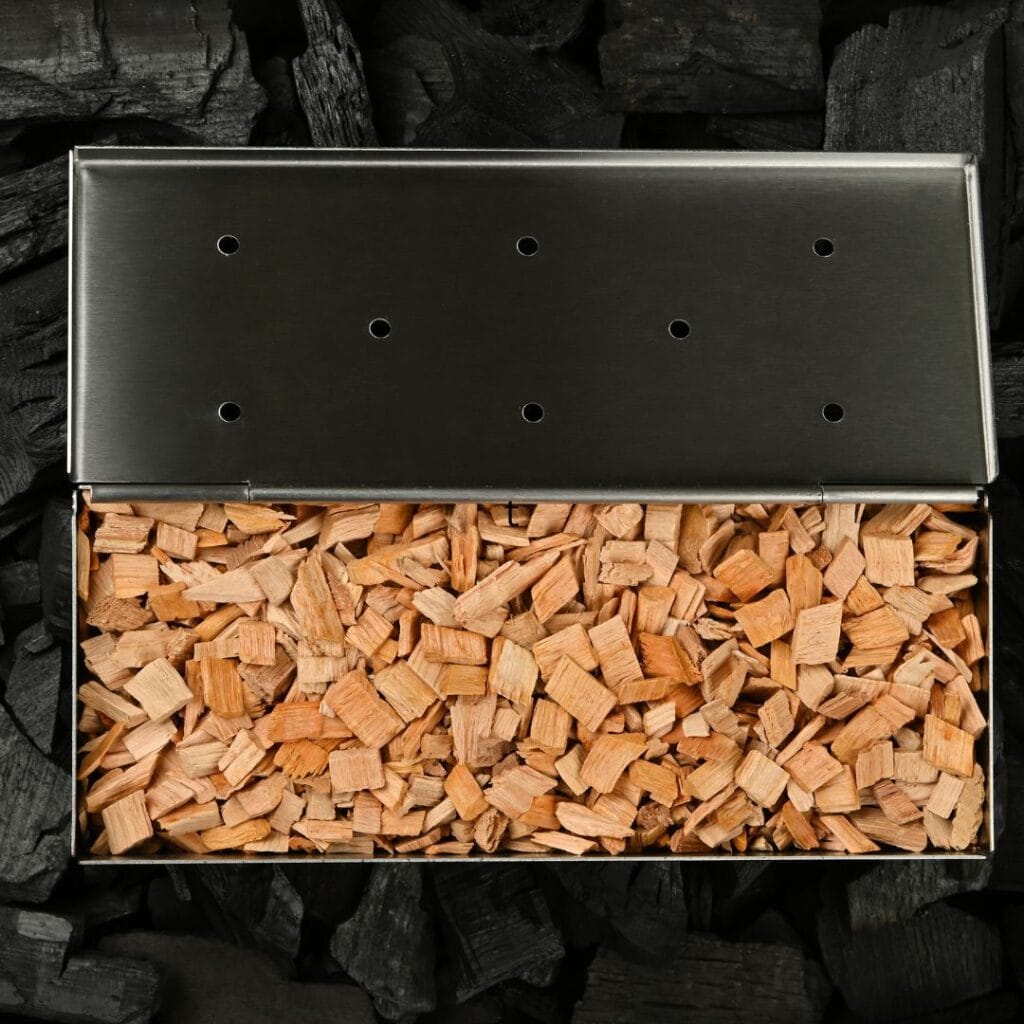
Step 5: Make sure you have your essential tools for your gas grill smoker
To make your gas grill smoking experience even better, there are a few essential tools and accessories that can come in handy. These tools will help you achieve better results and make the smoking process more enjoyable. Here are some must-have tools and accessories for gas grill smoking:
Smoker box:
A smoker box is a metal box or container that holds the wood chips and allows them to smolder and produce smoke. It is designed to fit directly on the flavorizer bars or lava rocks of your gas grill. A smoker box is essential for gas grill smoking, as it helps create and control the smoke production. This can be super simple to make, like my tin disposable bread pan box!
Wood chip soaking container:
Soaking the wood chips before smoking is important to ensure they produce a steady and consistent smoke. Use a container or bowl large enough to hold the wood chips and enough water to fully submerge them. Soak the wood chips for at least 30 minutes before using them.
Long handled tongs and spatula:
Long-handled tongs and a spatula are essential for handling and flipping the meats on the grill. They allow you to easily maneuver the meats without getting too close to the heat. Look for tongs and spatulas with heat-resistant handles for added safety.
Meat thermometer:
A meat thermometer is crucial for monitoring the internal temperature of your meats and ensuring they are cooked to the desired level of doneness. Look for a digital meat thermometer for quick and accurate readings.
Basting brush:
A basting brush is used to apply mop sauces or marinades to the meats during the smoking process. Look for a brush with heat-resistant bristles and a long handle for easy application.
Grill cover:
A grill cover is important for protecting your gas grill from the elements when not in use. It helps extend the lifespan of your grill and keeps it in good condition for future smoking sessions.
By having these essential tools and accessories on hand, you'll be well-equipped to take your gas grill smoking to the next level and achieve outstanding barbecue flavors.
Common Mistakes to Avoid When Gas Grill Smoking
Gas grill smoking can be a rewarding and delicious cooking technique, but it's important to avoid common mistakes that can negatively impact your results. Here are some common mistakes to avoid when gas grill smoking:
- Using too much smoke: While smoke is essential for gas grill smoking, using too much smoke can overpower the flavors of your meats and make them bitter. Use wood chips in moderation and allow them to smolder and produce a steady stream of smoke. Remember, it's the quality of the smoke that matters, not the quantity.
- Not preheating the grill: Preheating your gas grill is crucial for achieving the desired temperature and allowing the wood chips to start smoking. Skipping the preheating step can result in uneven cooking and a lack of smoky flavors.
- Opening the lid of your gas grill too often: Opening the lid of your gas grill too often can cause temperature fluctuations and impact the overall smoking process. Only open the lid when necessary, such as when checking the internal temperature of your meats.
- Not allowing enough time for smoking: Gas grill smoking is a slow cooking process that requires time and patience. Avoid rushing the process and allow enough time for the smoke to work its magic. Low and slow cooking will result in tender and flavorful meats.
- Neglecting temperature control**: Temperature control is crucial for gas grill smoking. Failure to monitor and control the temperature can result in undercooked or overcooked meats. Invest in a good quality thermometer and make adjustments as needed to maintain the desired temperature.
By avoiding these common mistakes, you'll be able to achieve better results with your gas grill smoking and create mouthwatering barbecue flavors.
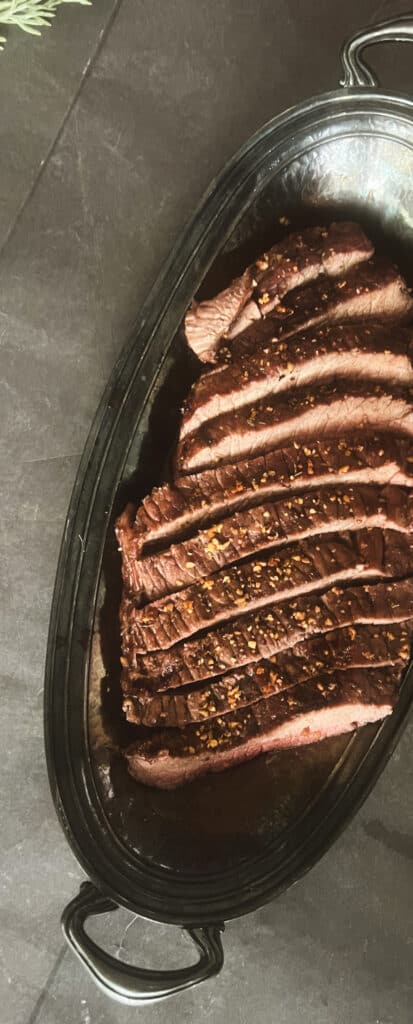
Recipes for your gas grill smoker
Now that you're equipped with the knowledge and tips for gas grill smoking, it's time to put them into action with some delicious recipes and ideas. Here are a few recipes to get you started:
Smoked pulled pork
Start with a pork shoulder or pork butt and season it with your favorite dry rub. Smoke the pork at a temperature of around 225°F for several hours until it reaches an internal temperature of 195°F. Once cooked, shred the meat using two forks and serve it on buns with your favorite barbecue sauce.
Smoked beef brisket
Season a beef brisket with a dry rub and smoke it at a temperature of around 225°F for several hours until it reaches an internal temperature of 203°F. This slow-cooked brisket will be tender and flavorful, perfect for slicing and serving as a main dish.
Smoked chicken wings
Marinate chicken wings in your favorite marinade for at least one hour. Smoke the wings at a temperature of around 275°F for about 1-2 hours until they reach an internal temperature of 165°F. Finish them off on a hot grill for a crispy exterior and serve them with your favorite dipping sauce.
London broil steak
Our first attempt at smoking worked great! This London broil steak turned out tasty, flavorful and oh so delicious!
These are just a few examples of the endless possibilities with gas grill smoking. Experiment with different meats, seasonings, and wood chip flavors to create your own unique barbecue creations. The key is to have fun and enjoy the process of mastering the art of gas grill smoking.


Leave a Reply